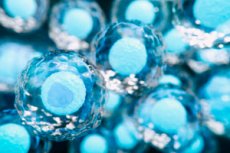New publications
Genes determine the specialization of stem cells
Last reviewed: 29.06.2025

All iLive content is medically reviewed or fact checked to ensure as much factual accuracy as possible.
We have strict sourcing guidelines and only link to reputable media sites, academic research institutions and, whenever possible, medically peer reviewed studies. Note that the numbers in parentheses ([1], [2], etc.) are clickable links to these studies.
If you feel that any of our content is inaccurate, out-of-date, or otherwise questionable, please select it and press Ctrl + Enter.

Certain types of stem cells "choose" a person's specialization.
The cellular structures of the organism gradually age and die, being replaced by new cells. This mechanism is characteristic of almost all organs and tissues. Structures are renewed, thanks to the reserve of stem cells. Five hundred billion new blood cells are formed daily in the adult human body: erythrocytes, lymphocytes, platelets (blood plates).
During the process of blood cell division, individual daughter structures continue to fulfill the role of stem cells to maintain their number, and the rest are transformed into blood cells. This transformation occurs in stages, and any primary stem cell is capable of forming some blood cell. What does the choice of cell transformation depend on, and do stem cells have specialization?
Here it is important to analyze the "hereditary predisposition" of certain structures. Thus, for each individual cell it is necessary to find its "ancestors" - that is, previous cells and "previous previous cells": to compile a so-called cellular "genealogical tree". For this purpose, using genetic engineering methods, a special gene tag is inserted into cellular DNA, which makes it possible to further observe it in the cell population. And it should not just be a label, it should be modified at each stage of division.
Scientists from many research laboratories, including the Massachusetts Institute of Technology, the Dana-Farber Cancer Research Institute, etc., are interested in such projects.
Some time ago, scientists established that the natural genetic marker that can distinguish between generations of cells is mitochondrial DNA. Mutations occur in it frequently, and it is relatively easy to trace them, unlike the DNA of the nucleus.
To date, there are many ways to observe any one structure. Researchers have already been able to build genealogical lists of many human blood cells. It has been found that stem cells from healthy young males form blood structures with the same degree of specialization. However, there are also some stem cells that prefer to form a single cell type - for example, it could be red blood cells, or eosinophils. This preference is relatively stable and is passed on through generations.
What happens as age-related changes increase? Individual stem-cell groups begin to predominate over others, which gradually leads to a decrease in the diversity of common cell groups. The exact mechanism of this phenomenon is not yet fully understood.
Scientists have learned to trace the hereditary history of cellular structures, to note changes in gene activity over generations. Presumably, such a phenomenon is applicable not only to blood cells, but also to other cells of the human body.
For general information about the study, see of the journal Nature
